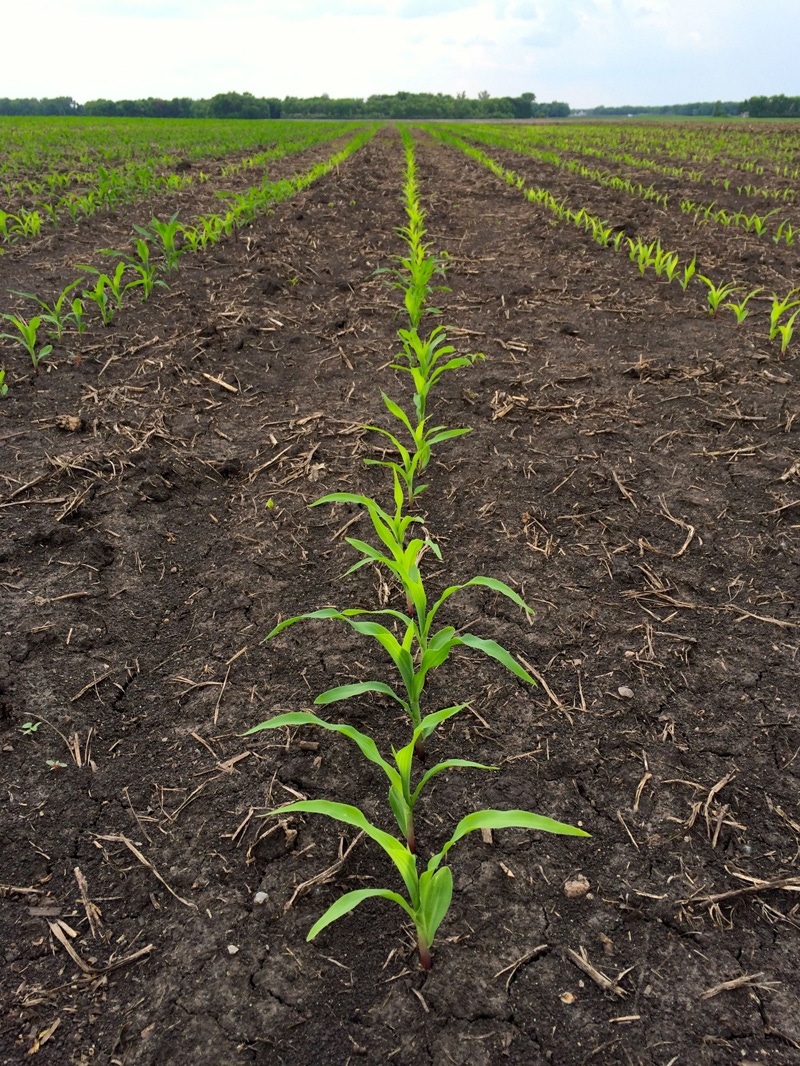May 17, 2018

Source: North Dakota State University
Planting progress for corn and small grains is still behind last year and the five-year average. Some fields are still too wet to work, and other farms have delayed planting while awaiting fertilizer. With the expected rain this week, planting will likely be delayed further, pushing planting dates beyond the optimum period.
For corn, planting an earlier hybrid is an option when planting is delayed. After May 25 and before June 1, consider planting a hybrid that is five days earlier than your preferred full season hybrid (see Table 1). In the past, I have used May 20 as the switch date, but more recent data support using full season hybrids later in May especially if you have on-farm drying capacity.
If planting is delayed to June 1, consider going with a hybrid 10 or more days earlier, depending on where you are in the state (planting corn after 1 June in the northern regions is not recommended). Earlier maturing hybrids will have less yield potential than full season hybrids, but they will reduce the risk of having corn that is too wet to be easily handle in the fall.
Each day of relative maturity adds 0.5% of moisture to the hybrid at harvest (same planting date and harvest date). This means that hybrids that are 10 days earlier will likely have 5% less moisture than the full season hybrid at harvest. Conditions for rapid field drying in the fall the past few seasons have been favorable, which have masked some of the differences in moisture content at harvest between hybrids of differing relative maturities. This will not always be the case. When deciding to plant corn late, also consider its implications for crop insurance coverage. In the past, insurance covered yield losses but not issues related to grain moisture at harvest.

The main concern with late-planted wheat is the reduction in its yield potential, rather than grain moisture. Last week we published tables that can be used to estimate yield loss associated with later planting dates. For late seeded small grains you should also consider increasing your seeding rate.
Recent data support increasing seeding rates up to a maximum rate of 1.6 million seeds per acre for later plantings dates. This helps to compensate for reduced tillering as later plantings develop when temperatures are less favorable for tiller development. Additionally, there may be some advantage to switching to earlier maturing varieties.
Earlier varieties may have less risk that grain filling occurs when temperatures are unfavorable. Though the spread in maturity length for small grains is somewhat limited, the earliest varieties (like most released from South Dakota) seem to do relatively better than the latest maturing ones when planted late in season when temperatures in July are above average.
Switching varieties only makes sense, however, if you have ready access to seed of an early maturing variety.
You May Also Like




